ENGLISH 220: INTRODUCTION TO LITERATURE
The Naked Eye/I

The Naked Eye/I

The Art of Madness in Literature, Film, Art, and the Web
 Tuesday, August 28, 2012
Tuesday, August 28, 2012Introduction to the concept of the class--what is the Naked Eye/I and what does it have to do with literature, culture, and more. Surprises also! These include film screenings, outrageous pictures, and more. Shakespeare, even, may make a cameo! Many things will be explained! The class passport; our extroverted tumblr ARTkive site; our day to day menu, and more more more!
ALSO--> a surprise writing assignment? Turn in your info sheet!
Hermeneutic Toolkit Terms of the Day: SEMIOTIC, SEMANTIC

 Thursday, August 30, 2012
Thursday, August 30, 2012You will walk into our only-a-tad-hideous GMCS 333 (aka The EYE/Imagination Lab) today having read the first 100 pages out of Richard Appignanesi's (author) and Oscar Zarate's (artist/designer) FREUD FOR BEGINNERS. As you read, try to imagine or discover any CONFLICTS that might arise between Appignanesi (who is basically delivering a gloss of Freud's theories) and Oscar Zarate (who is designing visual interpretation of Freud's findings). Come to class ready to discuss what you view to be the most useful terms/concepts you ran across in your readings. Don't be a afraid to take notes as you are reading and be sure to bring them to class to assist you with your contributions.
Hermeneutic Toolkit Terms of the Day: Hermeneutic, Analysis, Latent Dream Thought, Manifest Dream Content, Dreamwork, Transference, and Repression.

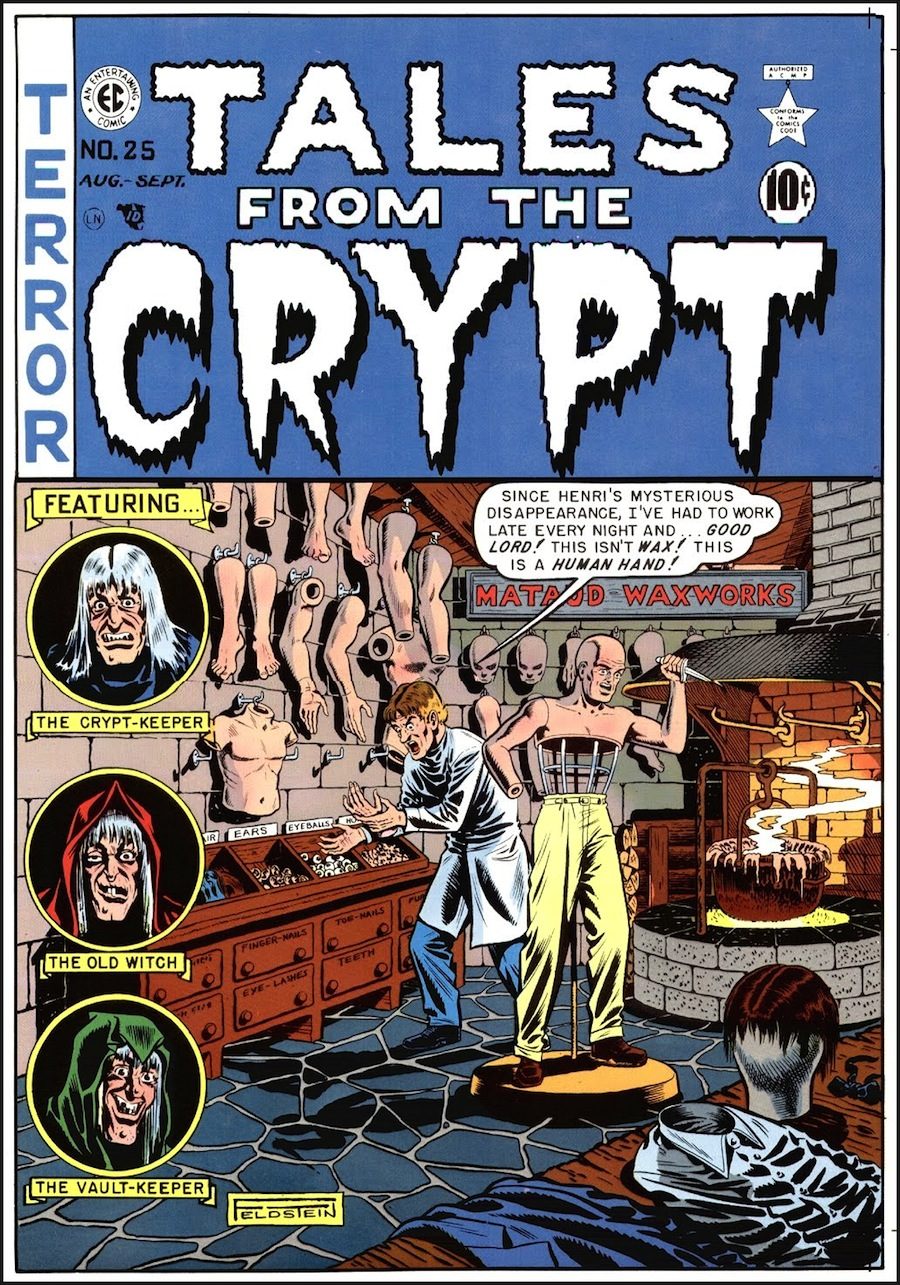 Tuesday, September 4, 2012
Tuesday, September 4, 2012It's Tuesday morning and some miraculous things have happened over the weekend: 1). You have completed your reading of FREUD FOR BEGINNERS. 2). You have printed out and carefully read E.T.A. Hoffmann's short story, "The Sand-Man." DO NOT COME TO CLASS WITHOUT YOUR PRINTOUT OF THIS SHORT STORY. There are all kinds of ideas to be on the lookout for as you read Hoffman's bizarre, eerie tale--subjectivity, identity, virtuality, the uncanny valley, representation/reality, etc. If you would like to get ahead, start reading Sigmund Freud's essay, "The Uncanny," collected in the required Freud essay collection, The Uncanny (Penguin). In this essay, Freud does a curious and peculiar interpretation of Hoffman's story. Do you agree with him? Do you think he's bonkers? If so, what is your interpretation of Hoffman's little tale?

 Thursday, September 6, 2012
Thursday, September 6, 2012An early vacation! There's no class today! But that does not mean that you are TOTALLY off the hook--I would like you to continue reading material from Freud's collection of essays. This is your 1st chance to earn a cineTREK! What's a cinetrek? It's like a Scooby-snack or extra-credit! Your assignment will be to print out a picture that has appeared on our tumblr ARTkive, and do a Freudian analysis of its meaning(s).
 You
must incorporate direct quotes from Freud's writings, properly
footnoted (MLA-style) to receive a cineTREK. cineTREKS or
"Extra-Credits" are extra points/grades you can accumulate on the off
chance you bomb a quiz or miss more than three classes during the term.
You may type this assignment or do it by hand--if you are an artist or
photographer, feel free to include elements of your own work in your
analsysis. This cineTREK is due, under my door, Arts and Letters 273 by
12 noon, Friday, September 7, 2012. This is NOT a mandatory
assignment!!!
You
must incorporate direct quotes from Freud's writings, properly
footnoted (MLA-style) to receive a cineTREK. cineTREKS or
"Extra-Credits" are extra points/grades you can accumulate on the off
chance you bomb a quiz or miss more than three classes during the term.
You may type this assignment or do it by hand--if you are an artist or
photographer, feel free to include elements of your own work in your
analsysis. This cineTREK is due, under my door, Arts and Letters 273 by
12 noon, Friday, September 7, 2012. This is NOT a mandatory
assignment!!!

Slight change of plans as we delay our foray into the unconscious via the twisted US/Mexico borderworld of Orson Welles's magnificent mind and, instead, continue our consideration of psychoanalysis/psychology by leaping headlong into Michael Powells utterly bizarre PEEPING TOM. In class we will briefly tie up our readings of Hoffman/Freud and then segue into our screening.
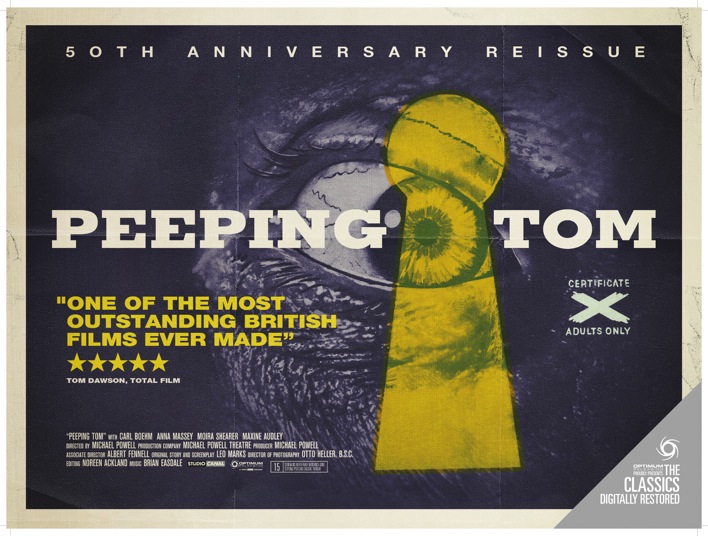

 Thursday, September 13, 2012
Thursday, September 13, 2012Today you walk into our state of the art seminar hall to continue your screening of Michael Powell's PEEPING TOM. The time we have spent with Freud has prepared us for the experience of camera-fetishist Mark Lewis, part-time cinematographer, part-time pornography photographer, full-time lunatic and serial killer. As you watch the film today, try to make connections between Hoffman's NATHANAEL and Powell's MARK; consider as well the connections between art, visuality, madness, and death that figure in both works. Hermeneutic Toolkit Words™ for today include fetish, neurosis, prosthetic, and displacement.

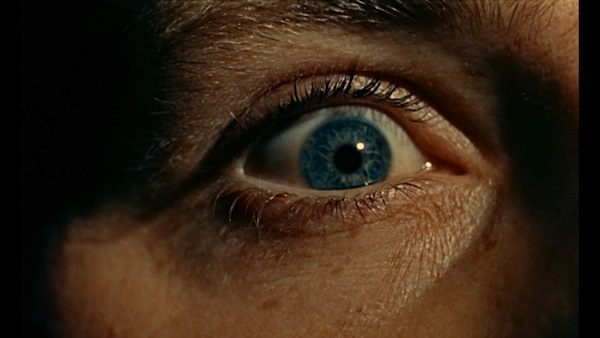

 Tuesday, September 18, 2012
Tuesday, September 18, 2012From the sinematic/cinematic mad imagination of Michael Powell, Sigmund Freud, Richard Appignanesi, and Oscar Zarate, we plunge headlong into the psyche of Europe's most twisted author of the 20th century: Franz Kafka. Enter our seductively appointed, hyper-modern (I am joking!) seminar room having read "The Metamorphosis"--pages 3 to 55 in the Bantam edition I picked for the class; also be sure to make use of this edition's great notes.... for instance the note on Samsa's name, on page 60, is worth the price of the whole book. As you read, be sure to start weaving connections between Kafka's creation and the works we have already sampled--for instance, are there any connections between Michael Powell's (and screenwriter Leo Mark's) character MARK LEWIS, and the squirming little creature at the heart of
 Kafka's
short story? Be sure to read this story again, even if you read
it in high school or in another class--each time you read a story, you
bring to it the sum total of your experiences with other stories, other
films, other pieces of art (and, most importantly, other works in this
class). Reading Kafka after reading Freud is like watching an already trippy film high, or on acid--it is an altogether other, othering,
experience. As "The Metamorphosis" is not that long, also read
the disordered reflections on Kafka found on pages 1 to 73 in David
Mairowitz's and Robert Crumb's KAFKA graphic narrative. Of all the
graphic artists in the world, it is perhaps Crumb (Dali and Frida Kahlo
would have been good as well) who is best suited, with all his wild
neuroses, to render the mad contours of Kafka's imagination.
Kafka's
short story? Be sure to read this story again, even if you read
it in high school or in another class--each time you read a story, you
bring to it the sum total of your experiences with other stories, other
films, other pieces of art (and, most importantly, other works in this
class). Reading Kafka after reading Freud is like watching an already trippy film high, or on acid--it is an altogether other, othering,
experience. As "The Metamorphosis" is not that long, also read
the disordered reflections on Kafka found on pages 1 to 73 in David
Mairowitz's and Robert Crumb's KAFKA graphic narrative. Of all the
graphic artists in the world, it is perhaps Crumb (Dali and Frida Kahlo
would have been good as well) who is best suited, with all his wild
neuroses, to render the mad contours of Kafka's imagination.
 Thursday, September 20, 2012
Thursday, September 20, 2012Complete your reading of Mairowitz & Crumb magnum opus on the life and works of Franz Kafka--writing assignment to turn in at the beginning of class today (it will count as your attendance as well):
Xerox or scan ONE IMAGE from the Mairowitz/Crumb volume. Paste this, either literally with tape or drop it in with your mad layout/computer skills onto your document and complete a one page, typed, double-spaced, cleverly titled analysis of ONE IMAGE from the Mairowitz/Crumb volume--be sure it is NOT one we talked about IN class and that you work hard to incorporate a hermeneutic toolkit word or two in your response.

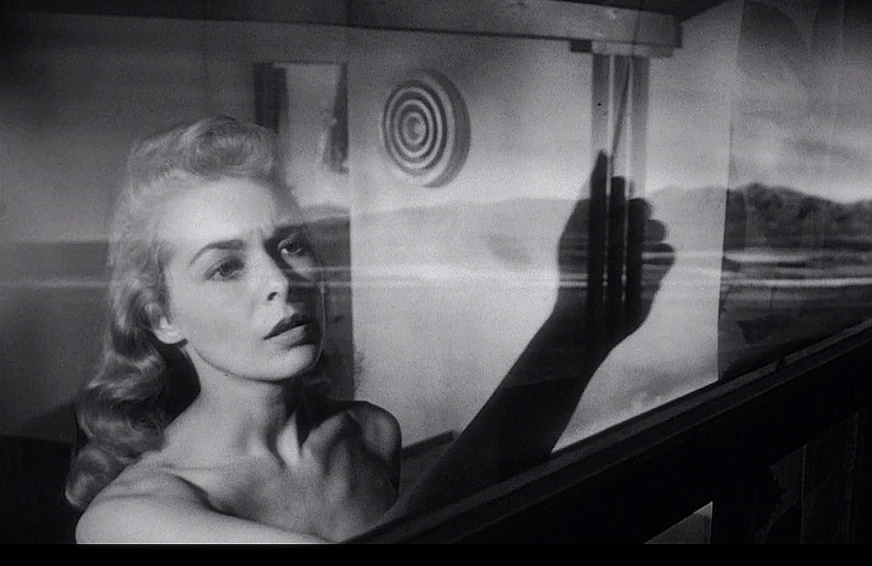
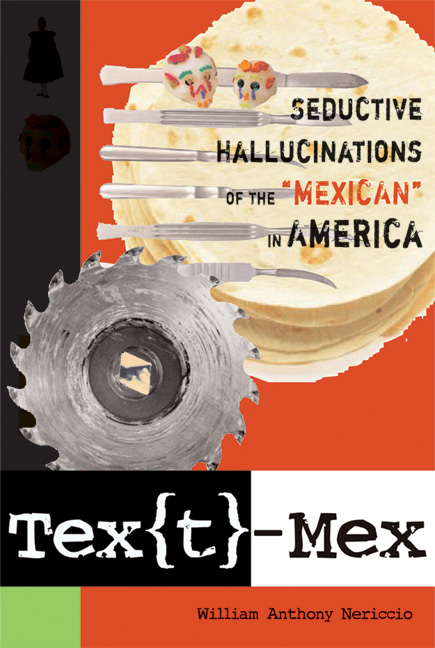 We
jump headlong from the utterly uncanny scribblings of Sigmund Freud and
disturbingly intimate jottings of Franz Kafka into the magical,
formidable imagination of Orson Welles and TOUCH OF EVIL. It's
like we are a Film Studies 101 class, as we treat our eyes to the
singular and singularly peculiar semiotic nightmare world of this bordertown
classic. In order to prepare for the screening, read the TOUCH OF
EVIL chapter in Tex[t]-Mex--bring
the book to class, as we may have time to go over certain challenging
parts of the essay. You do not have to finish the essay, reading
half of it--pp.39 to 57--is fine. If you get tired with the
essay, feel
free to take a break and look at other parts of the book; the TOUCH OF
EVIL chapter is one of the more challenging in this collection, written
to try and do
battle with other film studies scholars and professors (in other words,
you may need to trot out your dictionary at times to follow). TOUCH OF
EVILwill force us to re-calibrate our eyes--Welles' noir opus
asks us to revision our knowledge of the US/MEXICO border in ways that
expose our imagined vision of Americans, Mexicans, and others.
We
jump headlong from the utterly uncanny scribblings of Sigmund Freud and
disturbingly intimate jottings of Franz Kafka into the magical,
formidable imagination of Orson Welles and TOUCH OF EVIL. It's
like we are a Film Studies 101 class, as we treat our eyes to the
singular and singularly peculiar semiotic nightmare world of this bordertown
classic. In order to prepare for the screening, read the TOUCH OF
EVIL chapter in Tex[t]-Mex--bring
the book to class, as we may have time to go over certain challenging
parts of the essay. You do not have to finish the essay, reading
half of it--pp.39 to 57--is fine. If you get tired with the
essay, feel
free to take a break and look at other parts of the book; the TOUCH OF
EVIL chapter is one of the more challenging in this collection, written
to try and do
battle with other film studies scholars and professors (in other words,
you may need to trot out your dictionary at times to follow). TOUCH OF
EVILwill force us to re-calibrate our eyes--Welles' noir opus
asks us to revision our knowledge of the US/MEXICO border in ways that
expose our imagined vision of Americans, Mexicans, and others. Here's the infamous opening of the movie--all shot in ONE TAKE without edits!

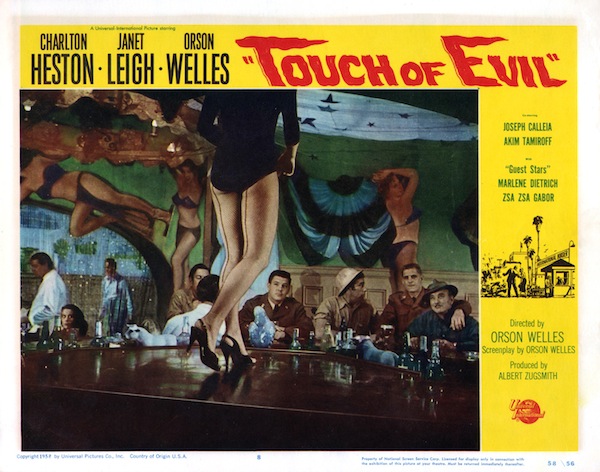
 We
will continue our screening and discussion of TOUCH OF EVIL; for your
reading, enter our seminar room having finished the Welles chapter in
Tex[t]-Mex, pages 57 to 80. Also read the INTRO and 1st Seductive
Hallucination gallery, pages 15 to 38. When you tire doing the
reading, cast my book aside and pick up the collection of paintings and
drawings in your FRIDA KAHLO collection by Gerry Souter. No painter has
redefined the imaginary contours of Mexico in the 20th century than
Frida Kahlo. Is it possible to use her haunting images of herself and
her nation as a way of derailing typical or stereotypical
representations of our neighbor to the south?
We
will continue our screening and discussion of TOUCH OF EVIL; for your
reading, enter our seminar room having finished the Welles chapter in
Tex[t]-Mex, pages 57 to 80. Also read the INTRO and 1st Seductive
Hallucination gallery, pages 15 to 38. When you tire doing the
reading, cast my book aside and pick up the collection of paintings and
drawings in your FRIDA KAHLO collection by Gerry Souter. No painter has
redefined the imaginary contours of Mexico in the 20th century than
Frida Kahlo. Is it possible to use her haunting images of herself and
her nation as a way of derailing typical or stereotypical
representations of our neighbor to the south?
 Tuesday, October 2, 2012
Tuesday, October 2, 2012From Hollywood and the fertive imagination of ORSON WELLES, we move south in direction and backwards in time to immerse our EYES and I's in the restless, pulsing canvases of FRIDA KAHLO. Read to page 157 in your KAHLO book, edited by Gerry Souter. This is a relatively EASY book to read as there are few long textual passages. Most important? I want you to carefully study the paintings/illustrations that make up this collection. There are dynamic and evocative connections to be made between the work of Freud (and of Appignanesi and Zarate), Michael Powell, Franz Kafka (and of Mairowitz and Crumb), and Welles and these personal, tragic, outrageous, innovative, and controversial canvases. SPECIAL YOU'RE THE PROFESSOR DAY!!! Come to class with a couple of paintings picked out that you are ready to analyze if called upon in class. NOTE: as you have some reading coming up for the next class from Berger et al's WAYS OF SEEING, you might want to start reading this cool 70s classic--these readings are FREE available here, Chapter 3, and here, Chapter 7!

 Thursday, October 4, 2012
Thursday, October 4, 2012You walk into the seminar having completed your reading/analysis of Souter's FRIDA KAHLO volume. In class we will continue our discussion focusing on specific works of Kahlo that add to the complexity of our understanding of the NAKED EYE. The Self-Portrait looms large in Kahlo's works--this is not an accident. Be sensitive to this as you study the painting collected in this volume. ADDITIONAL READING: Come into class having read chapters 3 and 7 from WAYS OF SEEING... Here's a peek at the series that gave birth to John Berger's WAYS OF SEEING--that's right, a book whose mother was a television show!

NOTE: Today, in class, you will receive (or it will be posted) prompts for NAKED EYE/Imagination Festival Numero Uno (aka 3- to 5-page critical essays); this work will be due Thursday, October 18, 2012, in class!

 Tuesday, October 9, 2012
Tuesday, October 9, 2012After two weeks of movie and art and semiotics, we return to the world of reading and the novel with the extraordinary imagination of Oscar Wilde and his classic THE PICTURE OF DORIAN GRAY. Enter our chamber of literary delights having read the first 7 chapters of the novel--in the special edition I ordered for this class (BROADVIEW), this includes pages 41 to 128. There is a splendid introduction to the novel by Norman Page that gives most of the cool secrets of the book away... you might want to save reading it for the END of the novel--or not read it at all (your call). One of the reasons TO READ the intro eventually is that it is a good introduction to "how to write about literature/writers"...

 Thursday, October 11, 2012
Thursday, October 11, 2012Continue your adventures reading THE PICTURE OF DORIAN GRAY--be on the lookout for key passages as you read that seem to underscore Wilde's interest in matters psychological, optical, artistic, semiotic, and sexual. We, you and I, develop curious relationships with the depictions of ourselves we see in mirrors or in pictures--take, for instance, the practice of "tagging" photos on Facebook, where surprising, disappointing, shocking, annoying manifestations of our "person" appear. Wilde anticipated the complexities of 21st century virtual selves in the 1890s; it's exciting to see how his Nostradamus-like superpowers of/perception forsee the dynamics of our complicated/camera-obsessed now.
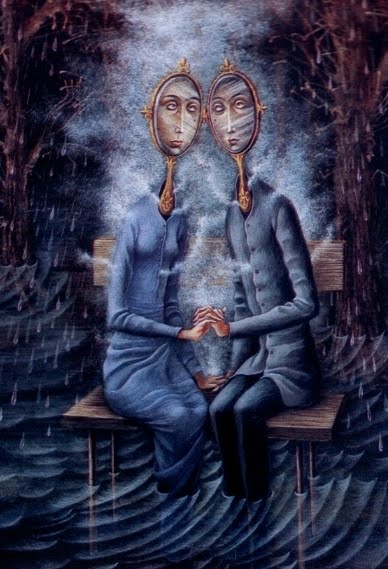 Another
thing to think about as you are reading is "what is the nature of
desire" in THE PICTURE OF DORIAN GRAY--is it heterosexual? gay?
lesbian? bisexual? omnisexual? Also, what is the relationship
between narcissism and desire? I asked you last week what color were
your eyes/I's in relation to TOUCH OF EVIL. Here the question is
a little bit different: how do your eyes/I's impact the course of your
desire for pleasure--for sex, to be sure, but also other pleasures?
Does the "I", traced by the teachings of the EYE, learn to
love/want/play with a mirror close at hand? Familiarize yourself with
the myth of Narcissus
before you begin your reading for seminar today--don't enter the
classroom without having read pages 129 to 178 (chapters 8 to 12).
Another
thing to think about as you are reading is "what is the nature of
desire" in THE PICTURE OF DORIAN GRAY--is it heterosexual? gay?
lesbian? bisexual? omnisexual? Also, what is the relationship
between narcissism and desire? I asked you last week what color were
your eyes/I's in relation to TOUCH OF EVIL. Here the question is
a little bit different: how do your eyes/I's impact the course of your
desire for pleasure--for sex, to be sure, but also other pleasures?
Does the "I", traced by the teachings of the EYE, learn to
love/want/play with a mirror close at hand? Familiarize yourself with
the myth of Narcissus
before you begin your reading for seminar today--don't enter the
classroom without having read pages 129 to 178 (chapters 8 to 12).
 Tuesday, October 16, 2012
Tuesday, October 16, 2012Over the weekend finish Oscar Wilde's novel THE PICTURE OF DORIAN GRAY--do please be prepared for a an in-class surprise writing challenge. Also, in class, we will begin screening REQUIEM FOR A DREAM

cineTREK!!!!
EXTRA CREDIT LECTURE
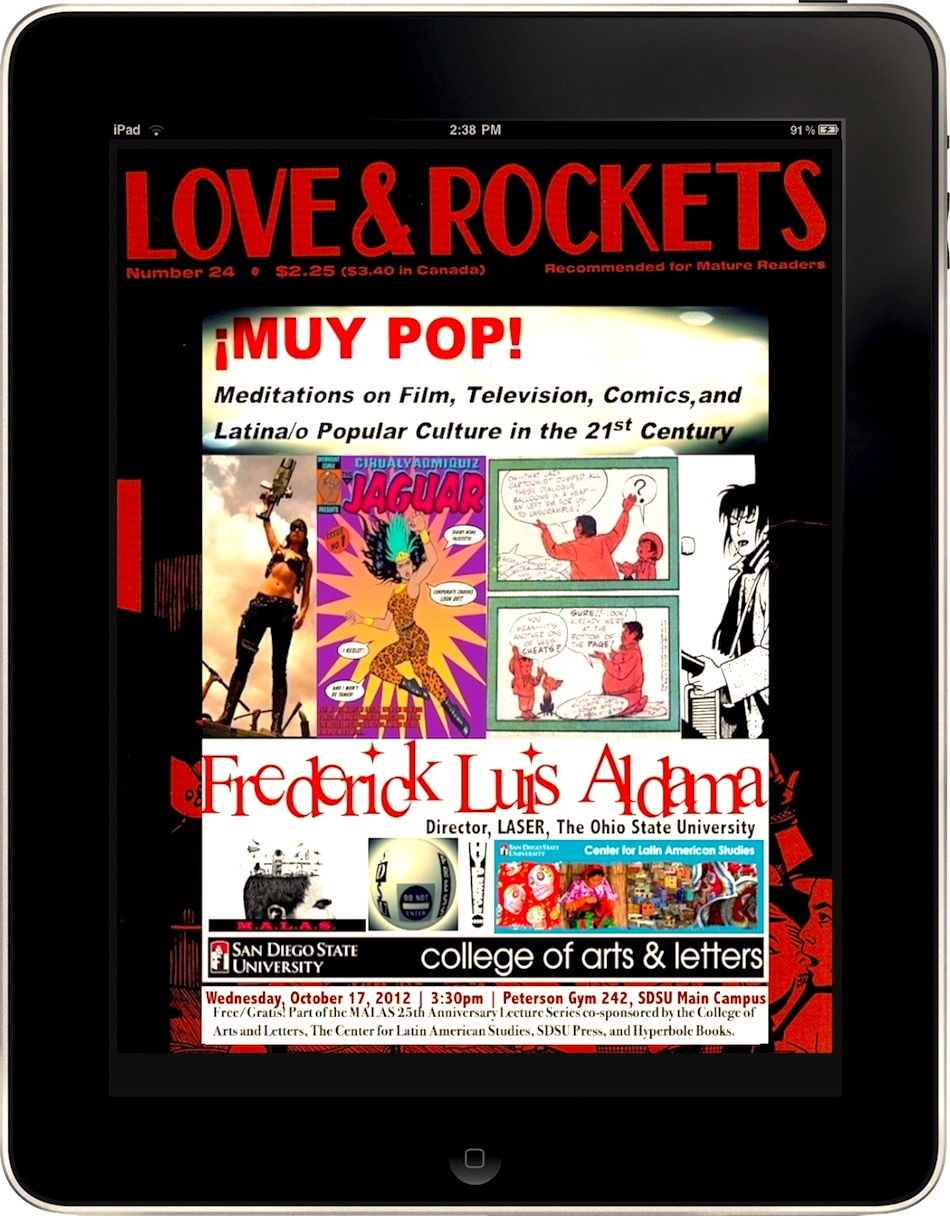 1. Buy Tex[t]-Mex, you'll need it for later in the semester anyway...
1. Buy Tex[t]-Mex, you'll need it for later in the semester anyway... (no I don't make a ton of money off each book, I'm an academic!!!!!)
2. Carefully read the chapters on Speedy Gonzales and on Frida Kahlo/Gilbert Hermandez.
3. Attend the lecture in the image opposite (you'll have to sign-in at the event)....
MUY POP: Meditations on Film, Television, Comics and Latina/o Popular Culture in the 21st Century
Frederick Luis Aldama
October 17, 2012 @ 3:30pm FREE
Peterson Gym 242 (come early, it's hard to find this almost hidden room)
4. Turn in a two-page typed, double-spaced, cleverly titled, illustrated essay applying ONE OR TWO ideas you take from the lecture to one or two panels from FRIDA, a short story/biography by Gilbert Hernandez. Due Thursday, October 25, 2012, in class.

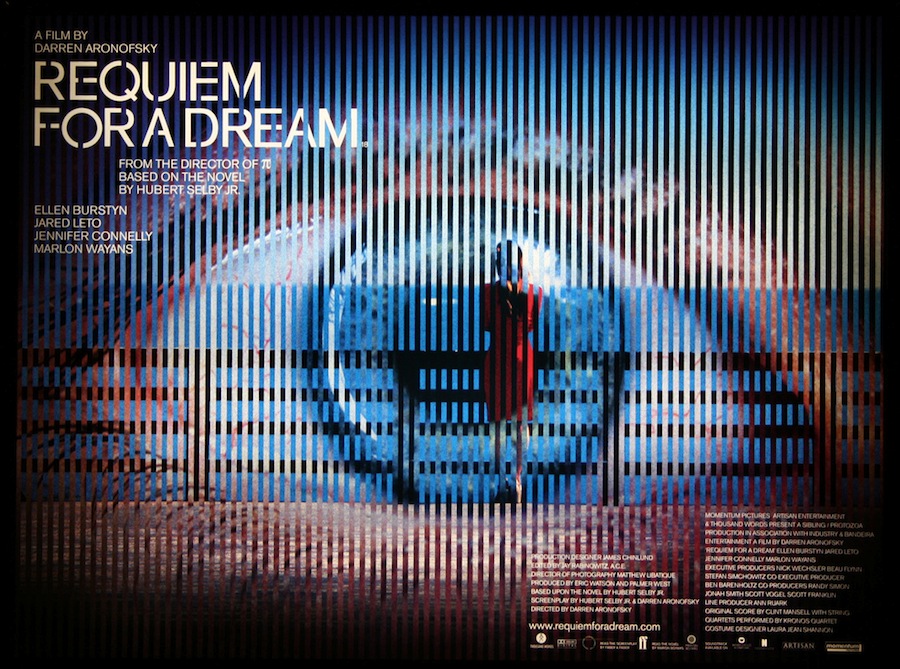
PAPERS ARE DUE...
In class we will continue screening REQUIEM FOR A DREAM, Aronofsky's classic meditation on addiction, desire, and more.... At the end of class we will have short quiz that very much resembles what will be your final at the end of the semester. Here, by the way, is the final from my Fall 2011 English 220 class--many of the texts we did that semester in a class called EYEGIENE are ones we are also covering this term. Note: your papers are due today, October 18, 2012 and will be returned to you, in class, Thursday, November 1, 2012.

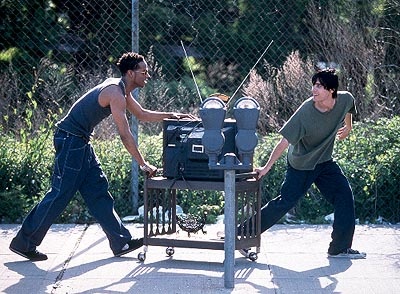 It
is a difficult film--a challenging piece of cinema, yet Darren
Aronofsky's REQUIEM FOR A DREAM emerges as a required experience for
students of 20th and 21st century literature and film curious about
notions of subjectivity, wounded psychology, addiction, and more.
Everywhere you look in REQUIEM FOR A DREAM, viewers encounter major
characters whose desires control their destiny. These addicts of WANT,
these mesmerized agents of altered reality walk an uneasy path in this
very American tragedy. On another note, sensitize yourself (and take
notes in the dark!) regarding key symbols/motifs that Aronofsky weaves
through his narrative--in particular, TELEVISION seems to be a
recurring "player"in Aronofsky's directorial vision. We know what
TELEVISION is, but what might it symbolize in Aronosky's haunting tale?
It
is a difficult film--a challenging piece of cinema, yet Darren
Aronofsky's REQUIEM FOR A DREAM emerges as a required experience for
students of 20th and 21st century literature and film curious about
notions of subjectivity, wounded psychology, addiction, and more.
Everywhere you look in REQUIEM FOR A DREAM, viewers encounter major
characters whose desires control their destiny. These addicts of WANT,
these mesmerized agents of altered reality walk an uneasy path in this
very American tragedy. On another note, sensitize yourself (and take
notes in the dark!) regarding key symbols/motifs that Aronofsky weaves
through his narrative--in particular, TELEVISION seems to be a
recurring "player"in Aronofsky's directorial vision. We know what
TELEVISION is, but what might it symbolize in Aronosky's haunting tale?In class we will finish our screening of the movie and discuss those parts of Aronofsky's project that jive with our ongoing seminar interrogations of literature, cinema, art, and life.

Outside of class, you should have read to page 112 in Nick Hornby's HIGH FIDELITY--we are not likely to have time to deal with much of it today, Tuesday.

 Today, Nick Hornby's fast-paced novel HIGH FIDELTY is on the turntable along with a big surprise that I
think you will like--along with your regular cast of characters, we
will have a surprise guest lecture by a prominent local musician,
writer, photographer, and DJ--Kevin Gossett. His twin obsessions, music
(he's a professional musician and DJ, a veteran of the tour circuit and
club scene) & literature (he's a professor of literature and
writing at area community colleges) make him the perfect tour guide for
our venture into HIGH FIDELITY. If you have time, along with your
reading (to page 201 in the novel), give a listen to this NPR interview with Hornby and/or read this conversation here.
Today, Nick Hornby's fast-paced novel HIGH FIDELTY is on the turntable along with a big surprise that I
think you will like--along with your regular cast of characters, we
will have a surprise guest lecture by a prominent local musician,
writer, photographer, and DJ--Kevin Gossett. His twin obsessions, music
(he's a professional musician and DJ, a veteran of the tour circuit and
club scene) & literature (he's a professor of literature and
writing at area community colleges) make him the perfect tour guide for
our venture into HIGH FIDELITY. If you have time, along with your
reading (to page 201 in the novel), give a listen to this NPR interview with Hornby and/or read this conversation here.
 Tuesday, October 30, 2012
Tuesday, October 30, 2012HIGH FIDELITY is in the bag, as you walk into class having finished Hornby's masterwork over the weekend. One of the cool things about the novel is the way Hornby reveals what makes a person a person--in the case of "Rob," his protagonist, life is a world ordered by his passion for music, his collection of albums functioning as a kind of mirror of sorts.
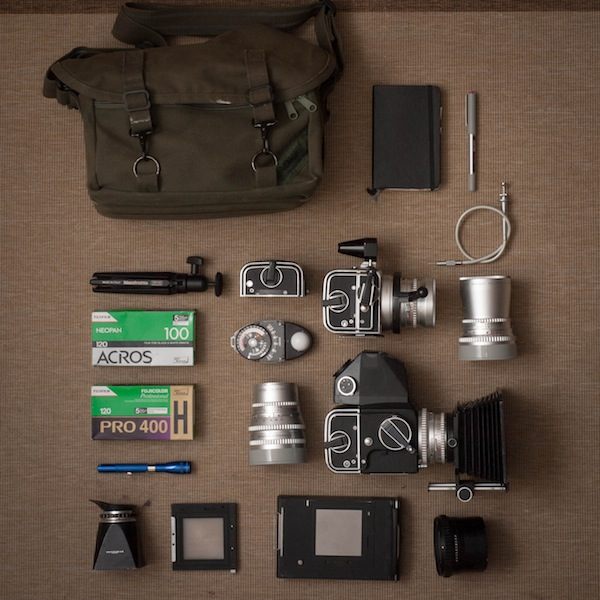 As you are reading, read to enjoy the novel, of course, but also
think about the things or apps or obsessions etc in your life that provide
mirrors for
your understanding of your world(s), that light up your pathways
as you navigate life. If you have the time or the curiosity, write a
paragraph about these life-ordering obsessions of yours and bring it
along to class to share with your colleagues--you can also email it to
me via memo@sdsu.edu (the best ones will end up in the ARTkive.
As you are reading, read to enjoy the novel, of course, but also
think about the things or apps or obsessions etc in your life that provide
mirrors for
your understanding of your world(s), that light up your pathways
as you navigate life. If you have the time or the curiosity, write a
paragraph about these life-ordering obsessions of yours and bring it
along to class to share with your colleagues--you can also email it to
me via memo@sdsu.edu (the best ones will end up in the ARTkive.
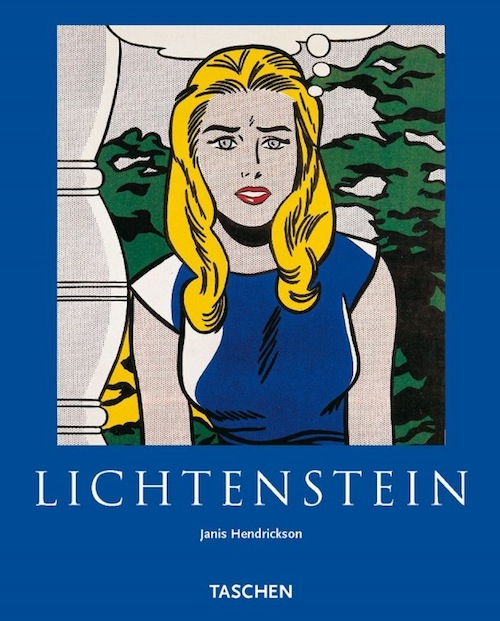 Thursday, November 1, 2012
Thursday, November 1, 2012From pop music we move to the king of pop art, ROY LICHTENSTEIN; walk into class having carefully read your Taschen published profile of Lichtenstein and his work authored by Janis Hendrickson--as you read the fast-moving, well-illustrated text, consider connections between Lichtenstein's pop-art universe and the world you just left "painted" by Nick Hornby. Also think of the similarities and differences between the four visual artists we have studied to date: Oscar Zarate, Robert Crumb, Frida Kahlo, and now, Roy Lichtenstein.

As you walk into class, be sure to pick up your graded essays; they will be in five sections on the floor or on a table in "the moat."

Last thing, TODAY, in class, you will receive your set of prompts for your IMAGINATION FESTIVAL II--due THURSDAY, NOVEMBER 15, 2012, in class!

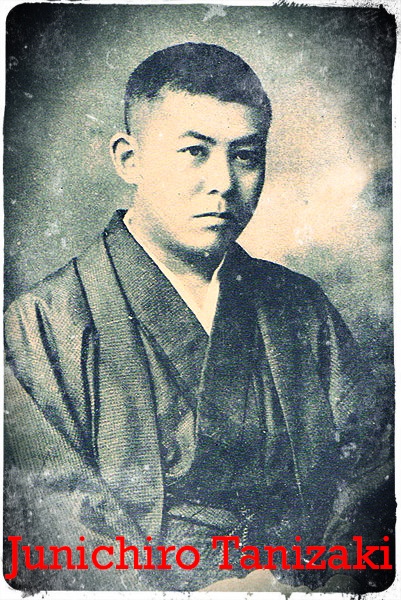 It's
Tuesday and we move from the world of pop music and the novel (HIGH
FIDELITY), from the world of Pop Art and the mirroring of American
consumerism (ROY LICHTENSTEIN), across the Pacific and to Japan, and
into the singularly gifted and twisted imagination of Junichiro
Tanizaki--how far should you read? Read up to page 115 (if you can
stop)--if you have a different
edition than the one I ordered for the class, read to the end of the
April 17nth diary entry. It strikes me that this is a great moment in
the term to fall upon Tanizaki as his novel will both test and reward
all the previous work you have accomplished this semester. One thing to
specifically watch for? Recall, the subtitle of our nakedEYE seminar:
The Art of Madness in Literature, Film, Art, and the Web.
As you read, consider the following: What is Madness? What
constitute insanity? Is there a line that divides obsession from
crazyness? fetish from pathology?
It's
Tuesday and we move from the world of pop music and the novel (HIGH
FIDELITY), from the world of Pop Art and the mirroring of American
consumerism (ROY LICHTENSTEIN), across the Pacific and to Japan, and
into the singularly gifted and twisted imagination of Junichiro
Tanizaki--how far should you read? Read up to page 115 (if you can
stop)--if you have a different
edition than the one I ordered for the class, read to the end of the
April 17nth diary entry. It strikes me that this is a great moment in
the term to fall upon Tanizaki as his novel will both test and reward
all the previous work you have accomplished this semester. One thing to
specifically watch for? Recall, the subtitle of our nakedEYE seminar:
The Art of Madness in Literature, Film, Art, and the Web.
As you read, consider the following: What is Madness? What
constitute insanity? Is there a line that divides obsession from
crazyness? fetish from pathology?
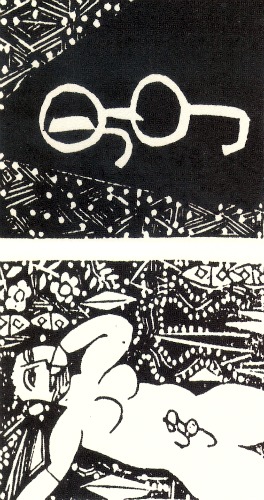 Thursday, November 8, 2012
Thursday, November 8, 2012 Enter our chamber having finished THE KEY--read pages 116 to 157. As
you read take care that you do not mindlessly believe one protagonist
or the other. Both Ikuko and her literature professor mate are cunning
masters of artifice. The key to THE KEY is to understand YOUR
positionality vis-a-vis the novel: in essence YOU are a voyeur reading
rival diaries written by devious, desire-laced psyches. Consider Tanizaki's novelistic role as a trickster as
you carefully read his outrageous piece of fiction.
Enter our chamber having finished THE KEY--read pages 116 to 157. As
you read take care that you do not mindlessly believe one protagonist
or the other. Both Ikuko and her literature professor mate are cunning
masters of artifice. The key to THE KEY is to understand YOUR
positionality vis-a-vis the novel: in essence YOU are a voyeur reading
rival diaries written by devious, desire-laced psyches. Consider Tanizaki's novelistic role as a trickster as
you carefully read his outrageous piece of fiction.

Today you walk into class having finished Dan Clowes' DEATH RAY. Among the many talents on display in this shortform masterpiece is Clowes' hyper-developed sense of irony--his ability to skewer specific elements of American culture via satire is also formidable. Come into class having read the book but also, and required, zerox one or two panels from the book that you think are key/provocative/evocative, paste them to a sheet of paper, and write a paragraph or two, typed or handwritten that makes the case for your selection. Turn this piece of writing in at the beginning of class making sure you place your work into the five TEAM receptacles located in the MOAT!


 IMAGINATION FESTIVAL II Due Today!!!!! &...
IMAGINATION FESTIVAL II Due Today!!!!! &......in class, we will screen key episodes from Larry David's CURB YOUR ENTHUSIASM and Neil Gilligan's BREAKING BAD

Above, a poignant scene from BREAKING BAD; below, a scene with a blind protagonist from CURB YOUR ENTHUSIASM--Larry David's willingness to grapple with previously taboo subjects is what makes the Emmy-winning show unique:

Today is the beginning of Thanksgiving week. We will not meet today in our rad seminar room. Instead, use the time off today to catch up on your readings.
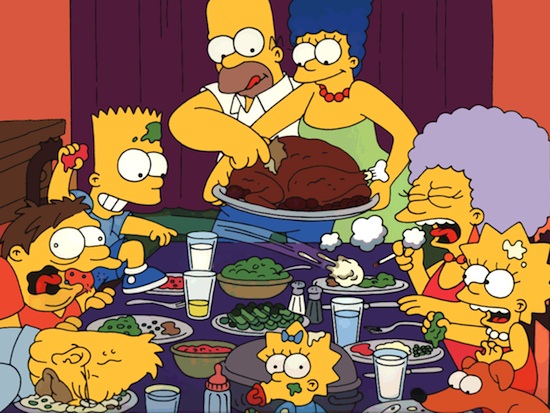

Thanksgiving Day! No class... of course!



Reread the RITA HAYWORTH chapter in Tex[t]-Mex. In class, we will begin to screen LARS AND THE REAL GIRL. The trick this week is to adapt your careful reading of the dense material from my book on the fabrication of ethnic identities and to adapt it, on the fly, to a piece of contemporary film that might appear, at first glance to have nothing to do with the more racially charged meditations in Tex[t]-Mex. Ultimately though, both Craig Gillespie, director, and Nancy Oliver, screenwriter, along with their key actor, Ryan Gosling, are keenly focused on the same problem that drove me to write a book about Seductive Hallucinations: our relationship with enabling/disabling fictions. Like the late Rita Hayworth, ultimately sentenced to a haunting chamber of memories that would prove a fatal labyrinth, so too does our remarkable Lars embark on a necessary adventure with his unique mail-order "bride"--the end result, however, is markedly different. Our discussion today should be particularly interesting, compelling, and useful.

Continue reading and rereading pages out of Tex[t]-Mex
 (you
are encouraged to forage around the volume, selecting
images, captions, discussions that catch your eye and ignoring others
that do nothing for you. In class, we will complete our screening
of LARS. As you watch the film today, don't hesitate to begin
constructing connections between this film and other works we have read
this semester. For example, Lars may seem to be suffering from a
kind of madness--but what distinguishes him from say, Nathanael (with
Olimpia) from Hoffman's "The Sand-Man"or from Jon Klassen and Dan Rodrigues's Annai for that matter?
(you
are encouraged to forage around the volume, selecting
images, captions, discussions that catch your eye and ignoring others
that do nothing for you. In class, we will complete our screening
of LARS. As you watch the film today, don't hesitate to begin
constructing connections between this film and other works we have read
this semester. For example, Lars may seem to be suffering from a
kind of madness--but what distinguishes him from say, Nathanael (with
Olimpia) from Hoffman's "The Sand-Man"or from Jon Klassen and Dan Rodrigues's Annai for that matter?

GENERAL DISCUSSION!
REVIEW OF THE FINAL!
RETURN OF ALL PAPERS/QUIZZES/EXTRA-CREDITS!


 Thursday, December 6, 2012
Thursday, December 6, 2012In class today, your final in-class Imagination Festival (also known as the NAKED EYE/I FINAL CHALLENGE)...

